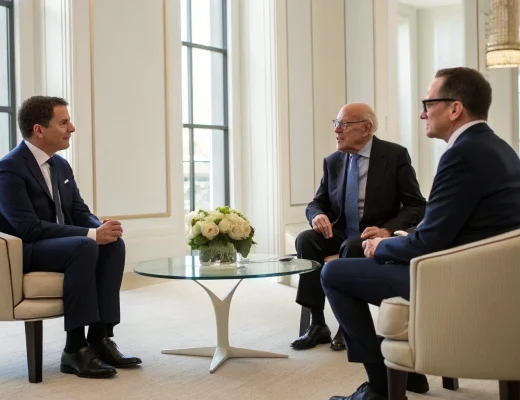The White House announced a significant shift in trade policy as the United States will implement
new tariffs on goods from more than 60 countries and the European Union. The tariffs, set at 10% or higher, will take effect just after midnight, marking a substantial change in America’s international trade relationships.
This move represents one of the most sweeping tariff actions in recent years, affecting a wide range of trading partners simultaneously. The announcement comes amid ongoing debates about global trade imbalances and America’s approach to international commerce.
Global Impact and Trade Relations
The new tariffs will likely reshape trade dynamics between the United States and dozens of nations across multiple continents. With more than 60 countries affected, including the entire European Union bloc, the economic ripple effects could be substantial for both American consumers and international markets.
Trade experts suggest these tariffs may lead to higher prices for imported goods in the US market. American businesses that rely on components or finished products from the affected countries might face increased costs, potentially passing these expenses to consumers.
For the targeted countries, the tariffs represent a significant challenge to their export sectors. Nations with economies heavily dependent on trade with the United States may experience particular pressure to
negotiate new terms.
Policy Rationale and Timing
While the White House announcement did not detail specific reasons for the timing of these tariffs, such measures are typically implemented to address perceived trade imbalances, protect domestic industries, or serve as leverage in broader international negotiations.
The decision to
set the minimum tariff rate at 10% suggests a measured approach rather than the more punitive rates that have sometimes been applied to individual countries in targeted trade disputes.
The midnight implementation timeline indicates an urgency to the
policy shift, giving businesses and trading partners minimal time to adjust to the new trade reality.
Expected Responses
International reaction to the tariffs will likely include:
- Formal protests through the World Trade Organization
- Potential retaliatory tariffs from affected nations
- Calls for emergency trade negotiations
- Market volatility as investors assess the economic impact
The European Union, as one of
America’s largest trading partners, may coordinate a unified response to the tariffs. The EU has historically responded to US tariffs with carefully targeted countermeasures on American exports.
Smaller nations with less economic leverage may seek to form coalitions or pursue diplomatic channels to
address their concerns about the new trade barriers.
As
markets adjust to this significant policy shift, economists will be watching closely for changes in trade flows, price levels, and potential impacts on global supply chains. The coming weeks will reveal whether these tariffs represent a temporary negotiating position or a more fundamental restructuring of America’s approach to international trade.







